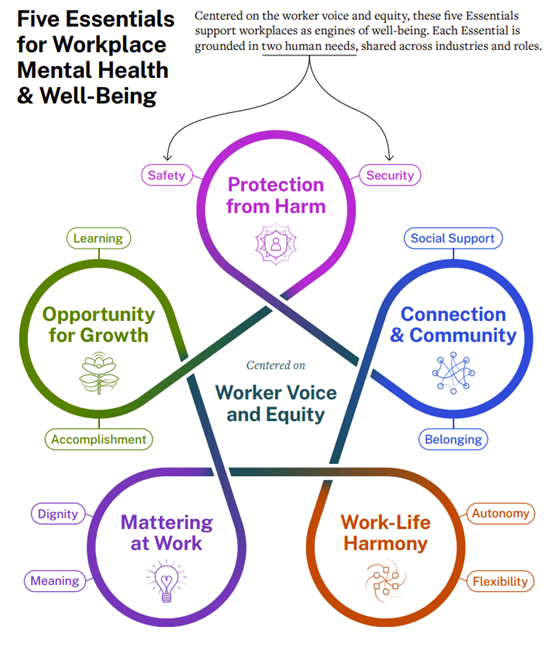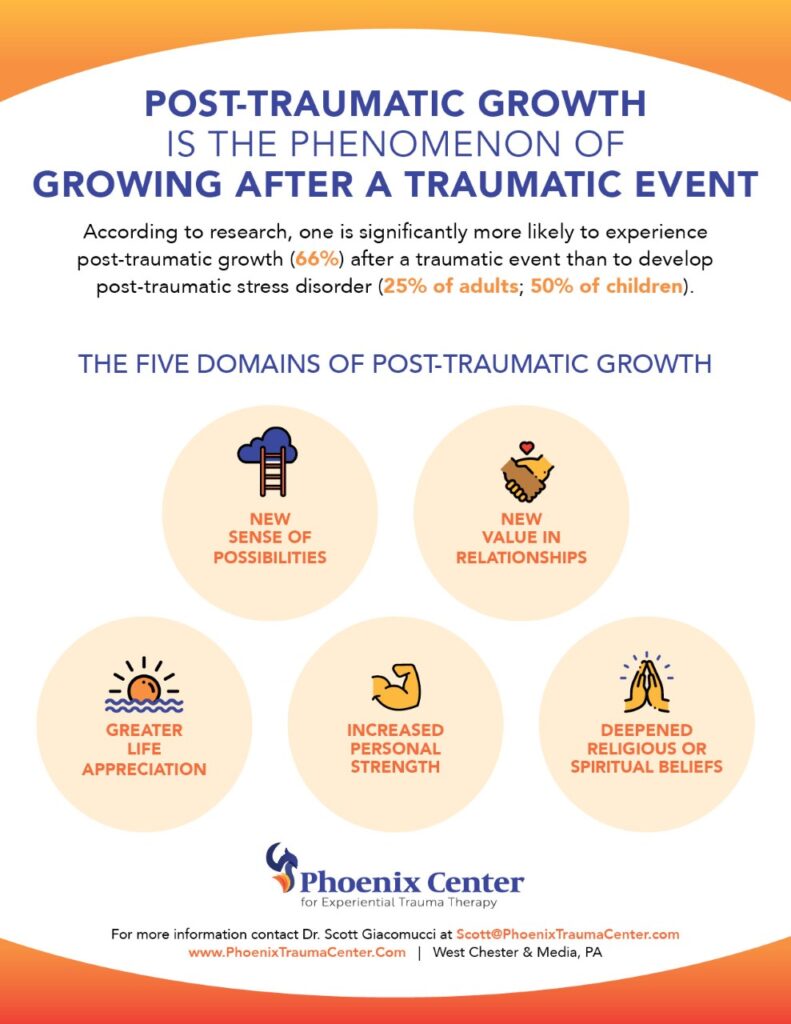APA Article Division 49 Newsletter October 2022
Experiential Group Psychotherapy & Psychodrama Column
This is an author preprint, published article available at:
Giacomucci, S. (Oct 2022). Psychodrama as a Treatment for Complex PTSD. Experiential Group Psychotherapy & Psychodrama Column. The Group Psychologist. Division 49: Society of Group Psychology & Group Psychotherapy. American Psychological Association. Washington, D.C. Accessible at – https://www.apadivisions.org/division-49/publications/newsletter/group-psychologist/2022/10/issue.pdf#page=13

Psychodrama as an Effective Treatment for Complex PTSD
By Scott Giacomucci, DSW, LCSW, BCD, CGP, FAAETS, TEP
Complex trauma and Complex Post-Traumatic Stress Disorder (CPTSD) are increasingly becoming recognized as commonly presenting clinical issues in group therapy. Though it has not been recognized in the DSM-5 as a mental health disorder, it was recognized in the ICD-11. CPTSD is caused by repeated experiences of trauma and is characterized by disruptions in 1) sense of self, 2) relationships, and 3) emotional regulation – in addition to the PTSD symptom clusters of reexperiencing, avoidance, and arousal, reactivity, and current sense of threat. CPTSD most often manifests as a result of reoccurring relational trauma in childhood while PTSD is more often caused by single incident traumas and shock trauma such as an experience of violence, a natural disaster, or motor vehicle accident. Preliminary research on CPTSD suggests that it may be even more common than PTSD in some clinical samples (Karatzias et al., 2017).
The unique nature of CPTSD strongly reflects many of the primary concerns of clients who seek psychotherapy and group psychotherapy services – struggles related to sense of self, relationships, and emotional regulation. Chances are good that every group therapist has participants in their groups (and likely also staff on their team) who are survivors of complex trauma and/or experiencing CPTSD symptoms. As such, it is important that clinicians be familiar with the treatment of CPTSD in group settings. In my own experience facilitating groups in inpatient substance abuse treatment and at an outpatient trauma therapy center, the majority of clients seeking services are survivors of complex trauma.
The neurobiology of trauma points to its impact to non-verbal parts of the brain (and body) that are only marginally impacted by cognition or talking (van der Kolk, 2014). Trauma is largely stored in the right hemisphere of the brain and coded in implicit memories. This may be particularly true for complex trauma, relational trauma, and attachment trauma – and especially when the memories are pre-verbal or repressed. Many trauma survivors are unable to remember their trauma or unable to tolerate the overwhelming emotions that accompany retelling the stories. Group therapists are faced with the same limitations of talk therapy in the treatment of trauma and are encouraged to also consider integrating action methods into their group processes.
This article focuses on psychodrama as one of the oldest group therapies (developed in 1921) and the first formalized creative arts therapy or body-oriented psychotherapy. Psychodrama emerged within Jacob Moreno’s triadic system – sociometry, psychodrama, and group psychotherapy – each of which parts can be effective in addressing complex trauma. Group therapy, with its emphasis on relationships and social learning, provides complex trauma survivors with significantly more opportunities to renegotiate relational trauma and what Yalom and Leszcz (2020) describe as the “recapitulation of the primary family group” in their therapeutic factors. This essentially describes the process by which the therapy group, and the matrix of relationships within it, can provide a safe holding environment and corrective renegotiation of internalized relational trauma from childhood.
Sociometry offers various action-based group tools for group leaders that may be useful when working with complex trauma – such as spectrograms, step-in sociometry, locograms/floor checks, and sociograms (which were detailed in previous articles of this newsletter column). Sociometry is intrinsically focused on the nature of relationships within one’s life and within the group itself. Considering that complex trauma primarily is experienced through harmful interpersonal relationships, it makes sense that sociometric analyses and interventions targeting the sociodynamics within groups would be important to consider. Experiential sociometry tools offer participants with a multitude of opportunities to reflect on their social choices, better understand themselves and others, see how others experience them, prevent retraumatization or unhelpful reenactments in the group sociodynamics, and consider the patterns of attractions and repulsions in their social life. Action sociometry provides the group with opportunities to move around the group and interact with each other in new ways while uncovering shared identity and experiences in an emotionally titrated manner that promotes emotional regulation (for a more in-depth description of action sociometry, see Giacomucci, 2021a).
The surplus reality of psychodrama affords limitless potentialities for renegotiating complex trauma (Giacomucci & Stone, 2019). Courtois & Ford (2016) outline a three phase approach in the treatment of CPTSD – 1) safety, stabilization, and engagement, 2) processing trauma, and 3) (Re)Integration. Following this triphasic model of trauma treatment, we might focus initial psychodrama sessions on developing strengths and resources to face trauma, promote affect regulation, and reconnect to a sense of safety beyond the hyperarousal (Giacomucci, 2018, 2021c). Trauma-informed psychodramatic interventions such as the double, mirror, and role reversal directly address CPTSD symptoms including reexperiencing, avoidance, arousal and reactivity, distorted sense of self, disruptions in relationships, and emotional regulation (Giacomucci, in-press). Once phase 1 objectives have been accomplished, psychodrama can be used to revisit moments of complex trauma, psychodramatically undo, then redo the memory in a new and corrective way. This provides clients with an embodied experience of completing survival responses that were unfulfilled in the moments of complex trauma while renegotiating traumatic memory networks with developmental repair and healing (Giacomucci, 2019, 2021b). As part of phase 3 trauma work, psychodrama can be used to envision and embody posttraumatic growth and role train or rehearse future templates for life situations that may trigger CPTSD symptoms. This provides a client with the opportunity to develop new social skills, confidence, spontaneity, and reformulate attachment styles and ways of being with others and the world.
Currently, there are very few research studies on the effective treatment of CPTSD (especially group therapy treatments of CPTSD), however some suggest that research on PTSD can guide our understanding of effective treatments for CPTSD as well (Karatzias et al., 2019). The emerging research on psychodrama as a treatment for PTSD continues to support its effectiveness with various traumatized populations (Giacomucci, 2021b). My own ongoing research on psychodrama and PTSD in an inpatient drug and alcohol center is primarily with complex trauma survivors and suggests high treatment effects (Giacomucci & Marquit, 2020; Giacomucci, Marquit, Miller Walsh, & Saccarelli, in-press). Interestingly, when past treatment outcome data using the DSM IV PTSD criteria are compared with newer (yet to be peer-reviewed or published) data from the same program using the updated DSM-5 PTSD criteria, the treatment effect nearly doubled from a mean decrease in PTSD of 20-25% to a mean decrease of about 45%. There may be other reasons for this change, but a primary reason appears to be the use of the updated PTSD diagnostic criteria. The primary change in the new DSM 5 PTSD symptomology is the inclusion of a new symptom cluster of “Negative Cognitions and Moods” which appears to overlap with the ICD-11 CPTSD symptoms of disruptions in sense of self, relationships, and emotional regulation. This suggests that psychodrama may be an effective treatment for CPTSD, but more research is needed to validate this hypothesis.
References
Courtois, C. A. & Ford, J. D. (2016). Treatment of Complex Trauma: A Sequenced, Relationship-Based Approach. New York, NY: The Guildford Press.
Giacomucci, S. (2018). The trauma survivor’s inner role atom: A clinical map for post-traumatic growth. Journal of Psychodrama, Sociometry, and Group Psychotherapy. 66(1): 115-129
Giacomucci, S. (2019). Social group work in action: A sociometry, psychodrama, and experiential trauma group therapy curriculum. Doctorate in Social Work (DSW) Dissertations. 124. Retrieved from https://repository.upenn.edu/cgi/viewcontent.cgi?article=1128&context=edissertations_sp2
Giacomucci, S. (2021a). Experiential sociometry in group work: Mutual aid for the group-as-a-whole. Social work with groups, 44(3), 204-214.
Giacomucci, S. (2021a). Social work, sociometry, and psychodrama: Experiential approaches for group therapists, community leaders, and social workers (Vol. 1). Springer Nature.
Giacomucci, S. (2021b). Traumatic stress and spontaneity: Trauma-focused and strengths-based psychodrama. In J. Maya & J. Maraver (Eds), Psychodrama Advances in Psychotherapy and Psychoeducational Interventions. Nova Science Publishers
Giacomucci, S. (in-press). Trauma-Informed Principles in Group Therapy, Psychodrama, and Organizations: Action Methods for Leadership. Routledge.
Giacomucci, S., & Marquit, J. (2020). The effectiveness of trauma-focused psychodrama in the treatment of PTSD in inpatient substance abuse treatment. Frontiers in Psychology, 896.
Giacomucci, S., Marquit, J., Miller-Walsh, K. & Saccarelli, R. (in-press). A Mixed-Methods Study on Psychodrama Treatment for PTSD and Depression in Inpatient Substance Use Treatment: A Comparison of Outcomes Pre-Pandemic and During Covid-19. Arts in Psychotherapy.
Giacomucci, S., & Stone, A. (2019). Being in two places at once: Renegotiating traumatic experience through the surplus reality of psychodrama. Social Work with Groups, 42(3), 184-196.
Karatzias, T., Cloitre, M., Maercker, A., Kazlauskas, E., Shevlin, M., Hyland, P., … & Brewin, C. R. (2017). PTSD and Complex PTSD: ICD-11 updates on concept and measurement in the UK, USA, Germany and Lithuania. European journal of psychotraumatology, 8(sup7), 1418103.
Karatzias, T., Murphy, P., Cloitre, M., Bisson, J., Roberts, N., Shevlin, M., … & Hutton, P. (2019). Psychological interventions for ICD-11 complex PTSD symptoms: Systematic review and meta-analysis. Psychological medicine, 49(11), 1761-1775.
Van der Kolk, B. A. (2014). The body keeps the score: Brain, mind, and body in the healing of trauma. New York: Viking Press.
Yalom, I. D., & Leszcz, M. (2020). The theory and practice of group psychotherapy. Basic books.











